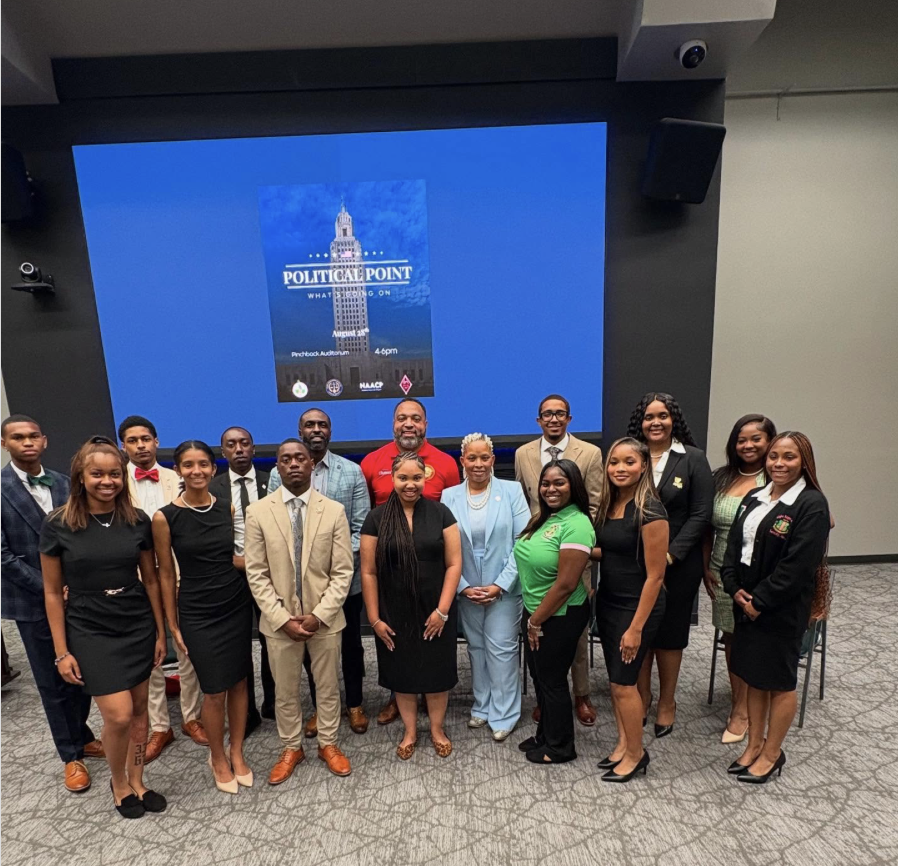From the same online activists that brought national attention to the injustices occurring in Jena and local focus on the discriminatory actions taking place at the local Baton Rouge eatery, Superior Grill, the team at colorofchange.org now introduces the story of the modern-day fight for equal pay.
In an e-mail released Wednesday, Jan. 16th to its subscribers, colorofchange.org outlined the Civil Rights Act of 1964, which was intended to regulate discriminatory pay, based on ethnicity, race and gender.
More than forty years later, research still shows that black men make 75 cents for every dollar that white men make, and women make only 68 cents.
An article published in the “New York Times” in May of 2007, reported that 4,905 pay discrimination claims were filed in 2006. Over 2,000 of those claims argued race-based discrimination, while 2,308 claims were gender-based and another 577 were said to have been based on discrimination due to national origin.
The Civil Rights Act of 1964, gives employees 180 days to challenge an act of pay discrimination in which case every paycheck received was treated as a discriminatory act. It was not until the Supreme Court’s ruling in Ledbetter v. Goodyear that only the initial decision regarding an employee’s pay could be considered that the law changed.
With this ruling not only does the Supreme Court make it nearly impossible to challenge discriminatory pay under the Civil Rights Act, but employees now must act within 180 days of being hired at discriminatory wages or being given a discriminatory raise; when it takes most employees much longer to discover that they are being discriminated against.
Most employers have strict rules and guidelines regarding the discussion of wages with fellow employees, and in some states, the very act is illegal.
Melissa S. Waters, professor of economics and finance at Southern University, feels that in order to truly begin to rectify the problem, one must understand the purpose of the Civil Rights Act of 1964 and the outcome of the Supreme Court’s ruling in Ledbetter v. Goodyear, in terms of two separate variables.
“First you have to make a distinction between differences in pay because of differences in occupation and differences in opportunity, such as educational experience and training and the acquisition of skills on the one hand; then make a distinction between two people who are in the exact same job with the same amount of experience, who receive different pay,” said Waters.
Waters mentioned she would begin by addressing the issue of women and minorities making less on average than white men resulting from the difference in the occupational structure of men and women in terms of their different experiences in the labor force.
“Since about the last forty years, men and women’s experiences in the labor force are starting to become more similar and when they become more similar we would expect the differential in pay to decrease, which it has not by much,” said Waters.
The Supreme Court’s decision in Ledbetter v. Goodyear created a greater incentive for companies to hide and continue the practice of discrimination, knowing that they will never be held accountable if they can avoid being caught for 180 days.
The Fair Pay Restoration Act would correct the Supreme Court’s decision by clarifying that each new discriminatory paycheck constitutes a discriminatory act, which is why the Colorofchange.org urges its subscribers to not only spread awareness, but also to get involved by contacting local congressmen and senators in order to stress the importance of this issue to not only women and minorities, but to all people.
According to reports provided by payscale.com, the average male makes nearly three dollars more than females hourly, depending on years of experience and skill at Southern alone.
The gap widens as one compares the salaries to other states. The report also shows where age plays a role in wages at Southern, where age groups 18-25 make about $39,000, 25-44 make nearly $47,000 and 44-65 are earning nearly $60,000 annually.
“Gender and race have played key roles in economics for years,” said Hamady Diop, Southern associate professor of economics and finance.
He added that as the fight for equal pay continues, (from an economic standpoint) people have a tendency to think that competing for a specific type of pay within the market place is determined by skill, education and various other factors; however gender and race play a part as well.
“If you are in a fair market where everything is open and the job is advertised, people will compete and the process will in turn select the best people for the job. Now we know that when it comes to recruitment, the process is basically flawed for many reasons, which may be gender, race and cultural bias,” added Diop.
Although optimistic about the future economy, Charlotte Hayes, a sophomore theater major of New Orleans, still has her worries.
“It is such a shame that we are still dealing with the same hardships after over 40 years; it saddens me,” said Hayes. “No matter what race, gender or nationality a person is, if they are doing the same work as someone else, they should get the same wages. I can only hope that the future economy will improve.”
With economists projecting possible recession, it appears that the times have caused some to turn away from optimism to constant worry.
The released email on colorofchange.org went on to say that we should not have to pass legislation just to keep our civil rights protections real and effective, as Congress originally intended them.
Categories:
Research shows blacks, women still earn less than white males
January 25, 2008
0
More to Discover





